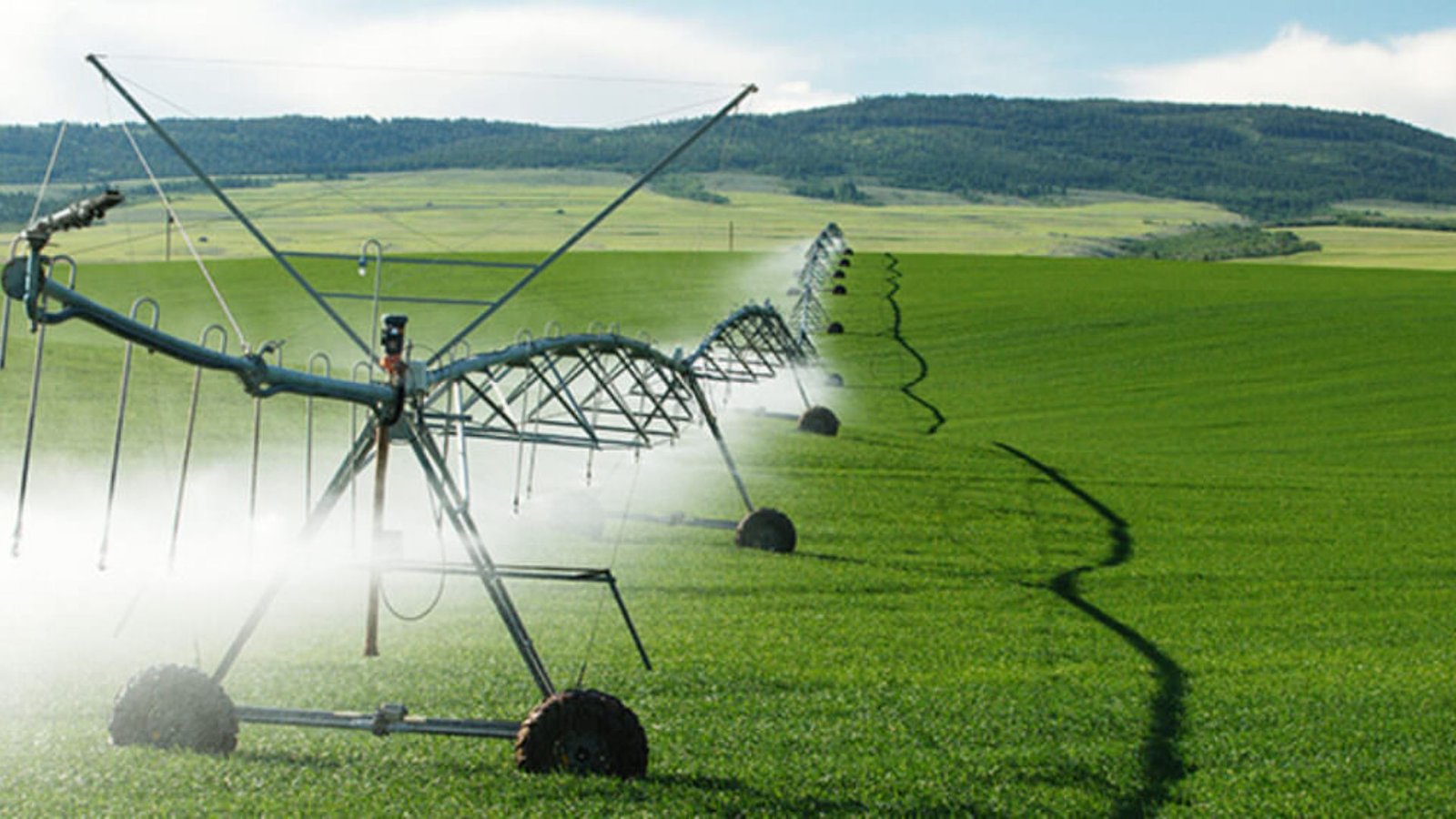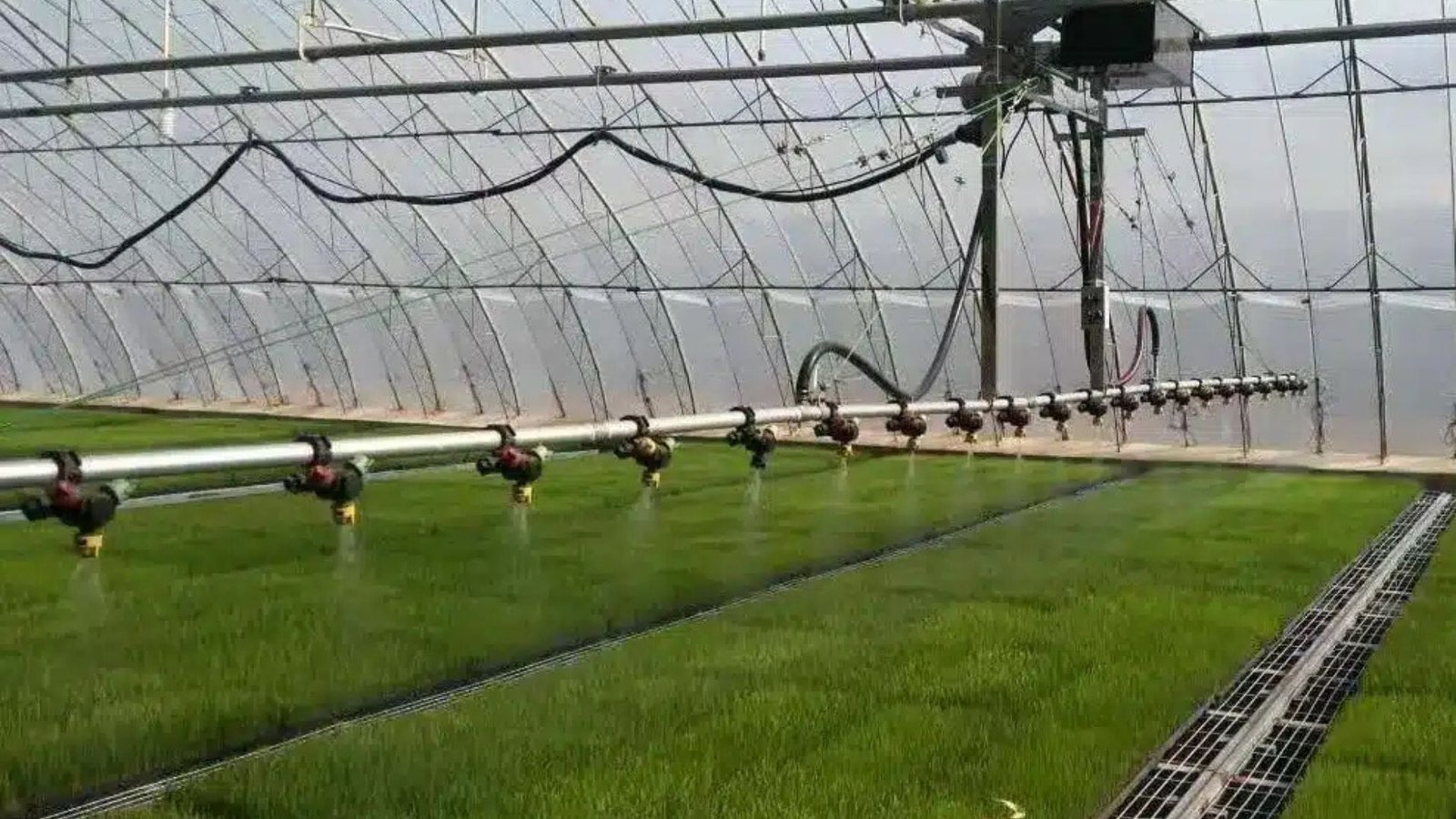Irrigation design plays a crucial role in helping agriculture adapt to the challenges of climate change. As extreme weather events such as droughts, heatwaves, and unpredictable rainfall become more common, farmers need reliable methods to maintain crop productivity. Efficient irrigation systems help manage water resources effectively, allowing farmers to mitigate the negative impacts of climate change and build resilience in their agricultural practices. In this article, we’ll explore how irrigation design supports climate resilience by ensuring water availability, enhancing crop growth, and promoting sustainable farming.

1. Efficient Water Use During Droughts
Droughts are becoming more frequent and intense due to climate change, leading to water shortages in many agricultural regions. Irrigation systems that use water efficiently are essential for coping with these conditions. Proper irrigation design ensures that crops receive the water they need without wasting this precious resource, even during dry spells.
How Irrigation Design Helps During Droughts:
- Drip Irrigation Systems: These systems deliver water directly to the plant roots, minimizing evaporation and runoff, which is especially important during drought conditions.
- Smart Irrigation Technology: Smart irrigation systems use weather forecasts and soil moisture sensors to adjust watering schedules, ensuring that crops are watered precisely when they need it, even in times of limited water.
- Water Storage Systems: Advanced irrigation systems may incorporate rainwater harvesting or water storage, allowing farmers to use collected water during dry periods.
Efficient irrigation reduces water waste, which is vital for maintaining crop growth during periods of water scarcity caused by climate change.
2. Adapting to Extreme Weather Conditions
Climate change is causing more unpredictable weather patterns, with sudden heatwaves or heavy rainfall often affecting crop growth. By adjusting watering schedules and water delivery methods, irrigation design helps farmers adapt to these extreme weather conditions.
How Irrigation Systems Adapt to Extreme Weather:
- Automated Adjustments: Irrigation systems with sensors can adjust watering schedules based on real-time data, such as temperature and humidity, to avoid overwatering during heavy rains or ensure adequate moisture during heatwaves.
- Precision Irrigation: Modern irrigation systems allow for precision watering, where only the areas that need water receive it. This helps prevent crop stress during extreme conditions like heatwaves or flooding.
- Flexible Scheduling: Some irrigation systems can be programmed to change their watering schedules based on seasonal weather patterns or sudden climate changes, helping crops survive unanticipated weather fluctuations.
By adjusting to varying weather conditions, irrigation design ensures that crops receive the optimal amount of water to thrive, regardless of the climate challenges farmers face.
3. Improving Soil Health and Water Retention
One of the key challenges of climate change is the increased risk of soil erosion, compaction, and degradation due to extreme weather events. Proper irrigation design helps maintain healthy soil by ensuring that water is distributed evenly and does not lead to erosion or waterlogging.
How Irrigation Design Protects Soil Health:
- Even Water Distribution: Proper irrigation systems ensure that water is applied consistently and evenly, preventing erosion and helping maintain soil structure.
- Reduced Waterlogging: Systems like drip irrigation apply water slowly and directly to the roots, which reduces the risk of waterlogging and ensures that the soil can absorb the moisture.
- Maintaining Organic Matter: Proper irrigation also helps maintain the soil’s organic matter, which is crucial for its ability to retain water and support plant growth, even during dry spells.
Healthy soil is vital for climate resilience, as it improves water retention and supports crops during periods of drought or unpredictable rainfall.
4. Enhancing Crop Yields in Unpredictable Conditions
Climate change can cause significant disruptions in crop growth, resulting in lower yields. Efficient irrigation systems are designed to help crops withstand these disruptions by providing consistent moisture and optimizing water use.
How Irrigation Design Boosts Crop Yields:
- Consistent Moisture Levels: Irrigation ensures that crops receive a steady supply of water, even when rainfall is irregular or delayed.
- Drought Resistance: By maintaining soil moisture levels with efficient irrigation systems, crops are better able to tolerate dry periods and continue growing healthily.
- Temperature Regulation: Watering crops during hot spells helps to regulate soil temperature, reducing heat stress and enabling plants to grow more effectively.
By ensuring that crops receive the right amount of water throughout their growth cycle, irrigation design enhances crop yields and helps farmers maintain food production, even under challenging weather conditions.
5. Reducing Environmental Impact and Promoting Sustainability
Sustainable irrigation practices help farmers reduce their environmental impact while building resilience to climate change. Using water efficiently and minimizing waste through well-designed irrigation systems not only conserves resources but also promotes eco-friendly farming practices.
How Irrigation Systems Support Sustainability:
- Water Conservation: Smart irrigation systems ensure water is used efficiently, reducing wastage and conserving water for future use.
- Lower Energy Consumption: Automated and solar-powered irrigation systems help reduce energy costs and the carbon footprint of farming operations.
- Minimized Runoff and Pollution: Precision irrigation systems reduce water runoff, preventing soil erosion and the spread of pesticides and fertilizers into nearby water bodies.
Sustainable irrigation practices help create a balance between crop production and environmental conservation, allowing farmers to adapt to climate change while preserving natural resources.
6. Increasing Resilience to Climate-Related Crop Failures
Climate change is causing shifts in growing seasons and making farming more unpredictable. Advanced irrigation design plays a key role in mitigating the risk of crop failure due to climate-related factors such as irregular rainfall, temperature fluctuations, and changing growing seasons.
How Irrigation Design Increases Resilience:
- Seasonal Adjustments: Irrigation systems can be adjusted to fit the growing season, ensuring that crops receive the necessary water during key growth periods, even if weather patterns shift.
- Enhanced Crop Protection: Proper watering reduces the likelihood of crops experiencing stress, which can lead to poor yields or crop failure, especially during periods of unusual weather events.
- Drought Recovery: Irrigation helps crops recover from drought conditions by providing consistent moisture, improving their chances of survival and continued growth.
With the ability to adapt irrigation schedules based on seasonal or unexpected weather changes, farmers can protect their crops and improve their resilience to climate risks.
7. Supporting Global Food Security Amidst Climate Change
As climate change threatens food security worldwide, efficient irrigation plays a critical role in ensuring that we continue to produce enough food. By increasing water efficiency and maintaining consistent crop growth, irrigation design supports long-term agricultural production, helping to meet the growing global demand for food.
How Irrigation Design Promotes Food Security:
- Reduced Crop Losses: With the help of proper irrigation, farmers can avoid crop losses caused by droughts, floods, and other climate-induced weather events.
- Maximized Land Use: Efficient irrigation allows farmers to make the most of their land, increasing crop yields and contributing to food production in regions with limited resources.
By improving water use efficiency and helping farmers adapt to climate change, irrigation design supports global food security in an increasingly unpredictable climate.
Conclusion
Irrigation design plays a central role in building climate resilience in agriculture. As climate change continues to affect weather patterns and water availability, efficient irrigation systems offer solutions for managing water resources, protecting crops, and sustaining food production. From reducing water waste to adapting to extreme weather, irrigation systems provide farmers with the tools they need to thrive in an unpredictable climate. By investing in smart, sustainable irrigation technologies, we can help ensure that agriculture remains productive, resilient, and able to meet global food demands in the face of climate change.




